The recently released series of WW1 Wings of Glory Airplane Packs includes the highly successful Allied two–seaters Breguet 14, a plane capable of both recon and light bombing. Designed by Louis Breguet, it was the first Allied plane using more metal than wood in its construction, mostly duraluminum and welded steel tubing. The result was a plane that was light, sturdy, and very fast, with many features that were revolutionary for the day. It could withstand severe battle damage as well as outrun many of the German fighters of its day—two excellent qualities that pilots appreciated.
The French had insisted on “pusher” designs for 2-seaters, an error which led to the French having a gap in this kind of aircraft development and using license built Sopwith “Strutters” for most of 1917. The new materials and technique of Breguet 14 was met with skepticism from the French Air Service and the development and acceptance time was lengthy. The first prototype flew in late 1916 and Breguet entered the design in several government competitions, winning for both observation (the 14 A2) and bombing (the 14B2).
Several more companies were enlisted to produce the plane in large numbers, and at its peak in 1918 it equipped 71 French squadrons, was the most common Belgian 2-seater, made up about 25% of US bomber/observation use, and was the favorite among crews. The Breguet was mass produced in several variations, including a seaplane model, and was employed in several roles - a reconnaissance aircraft, a day/night bomber, and even as an air ambulance.
The Breguet BR.14 was equipped with a Renault 12 Fox, 12-cylinder, liquid cooled inline V, 300 hp engine, and could reach a speed of 110 mph (177 km/h) at 6560 ft (2,000 m). It was armed with two or three machine guns and could load 661 lbs (300 kg) of bombs.
Almost 6000 were built during the war and production continued long after, with the Breguet 14 used all over the world, by over 25 countries. The metal construction worked particularly well in tropical environments, where wooden planes soon fell apart. It also played a prominent role in the Polish-Russian War.
Some Breguet 14s still exist to this day, and there’s an original on display at the Musée de l’Air et l’Espace at Le Bourget.
Breguet 14 in Wings of Glory
The Airplane Packs present three versions of the aircraft: two Breguet 14 B2, used by Escadrille Br 111 and by the crew Georges Audinot and Adrien Hellouin De Cénival, from Escadrille Br 127, and one A2, flew by Gilbert Stanley and Harry T. Folger, from US 96th Squadron.
Escadrille Br 111 was established in April 1915 and originally equipped with Voisin bombers, eventually including some of the 37mm armed planes. It flew in the Battles of Verdun and the Somme, then converted to Sopwiths in early 1917, and Breguets before the end of that year. It served out the rest of the war on photography, bombing, and recon missions.
Escadrille Br 111’s Breguet 14 features special cards that aid its ability as a recon plane (Photo Expert), plus offering optional armament and the “bullet checker” that reduces the potential of gun jams.
The adjutant Georges Audinot and the aspirant Adrien Helloin de Cénival served the Escadrille Br 127. The unit was formed in April 1917, using Paul Schmitt bombers but did not create a unit badge until equipped with the Breguet 14 in November of that year. They selected a winged elephant, dropping bombs, with its trunk pointed upwards to copy the Renault engine’s exhaust stack.
Escadrille Br 127 spent much of their service on bombing missions, as reflected in the special cards of this model, and the skills of the crew. Enjoy the “Weapon Specialist” and “Precision Bombardier,” as well as the “Fire Control Expert “(because no one likes fires!).
Gilbert Stanley/Harry T. Folger’s model carries the markings of the 96th Aero Squadron, one of the “pioneer” bombing groups for the US and intended for long-range, day bombing missions. It made the very first “US” bombing attack, in June of 1918, equipped with very worn training planes that were adapted to bombing. Six of these planes were lost on a single mission in July as they left on a long bombing mission in the face of a storm and strong winds. All landed in enemy territory. But new planes and new crewmen followed, and the unit was heavily engaged for the remainder of the war, especially in the Battle of Saint-Mihiel and the Meuse-Argonne Offensive. Special cards for this model aid bombing and observing with the “Precision Bombardier”, “Photo Expert”, and the deadly “Sniper” cards.
Information sources: History Net; The Aerodrome; World War 1; Escadrille PS 127 - Br 127; "The Breguet 14: Profile Publications Number 157", Bruce, J.M. and Jean Noel, Profile Publications Ltd, 1967; "Combat Aircraft of the World", Taylor, John W. R., Jean Alexander, George Rainbird Ltd, 1969 (Pg.74-75 Library of Congress Catalog Card Number 68-25459).
* Photo from the collection of Lewis Lupton Kaylor, Corporal, Photographic Section, Air Service, United States Army. **Air Service, United States Army.

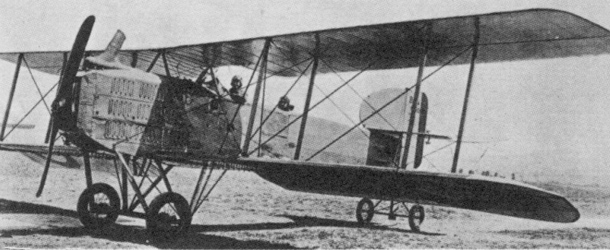
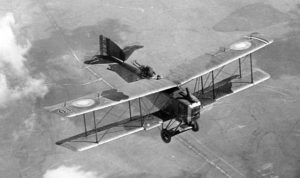
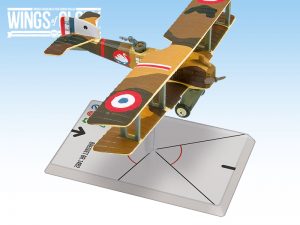
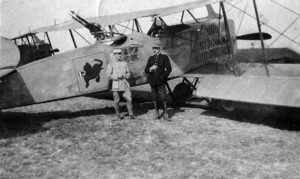
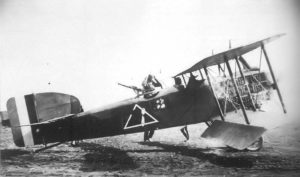

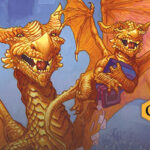






Follow Us on